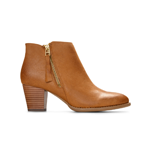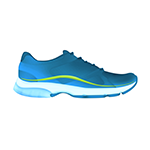
What Makes a Flat or Sandal Great?
Things That Make a Flat or Sandal Great—and Which Are My Fave to Wear!
By Marisa Byrne
It’s peak summer—days are bright, long, and temperatures are warm! It’s that time of year to make the most of this all-too-quick season; put on your favorite sundress, hat, sunglasses, and simply enjoy. One question that can complicate the easy-breeziness of it all however, is the eternal, “should I wear a flat or a sandal?” When posed with such a dilemma—and both being great options—I’m often asked for my professional opinion. With no summer time to waste, here are my thoughts. But first, a bit of background on these two footwear essentials!
Flats and Sandals 101
Let’s start with defining what distinguishes flats and sandals. A flat is generally differentiated by having a closed toe, and a sandal is typically open toe. That’s where it stops being simple and lots of wonderful variety ensues! Toe shapes can be pointed, round, almond, and square, while heel heights can range from slight to block to “high heel” on a dressier sandal style. Both flats and sandals can have closed backs, slingbacks, or possibly an ankle strap or tie for fastening.
Classifications for flats include: ballet, slingback, skimmer, loafer, smoking slipper, D’orsay, pointed toe, and espadrille.
Classifications for sandals include: fisherman, t-strap, ankle strap, toe post (or thong), gladiator, slingback, slide, wedge, and sport.
Any questions? 😉
Things to Consider When Shopping for Flats
Flats are a little trickier to fit than other shoes due to the varieties in shape, so arrive wise with this info:
- Toe Shape: I find this to be a personal preference based on experience and/or a decision based on current trends. Round, pointy, square or almond? You’ll need to do some research by trying a bunch on. Flats are what we deem “dead fits” in the shoe industry, meaning there are usually little to no fit adjustments—the fit is “what it is” on your foot. For this reason, I recommend finding a toe-box shape that provides you with the most comfort and sticking with it. For example, I have long, skinnier toes, so rounded ballet flats do not fit me as well as longer, pointy flats. Much as I love the rounded look, I’ve just learned to accept that they are not for me.
- The Cuboid: It’s the back part of the flat where your heel is held in the shoe, and it’s one of the hardest parts of the shoe to get perfect during manufacturing. Well-made flats (like those by Vionic 😊) will have a snug cuboid, but not too snug to create rubbing or blistering in the back. The cuboid should hold you comfortably in the shoe, reducing the chance of “heel-slip” where your foot pops out of the back when you walk.
- Materialization: This is a key factor in the comfort you get in a flat. Soft nappa leathers, suedes, patent, or knit textiles tend to provide the softest options for a flat to mold to the foot.
Things to Consider When Shopping for Sandals
Sandals, thankfully, are easier to fit because there is usually an open toe and more versatility for varying foot types with adjustable straps.
- Usage: Is the sandal you’re looking for intended to be an everyday sandal, a sandal for an occasion, a sandal for vacation, or all of the above? Knowing this can help with what’s next.
- Color: Neutrals or metallics are always the easiest to wear for many occasions, as well as dressing up or dressing casual. Black or white are always great, but may not work with everything in your summer/spring wardrobe as well as you think. I find soft gold or pewter to offer more wear flexibility, and provide a stronger statement for dressing up. Other times it’s just really fun to wear a pop of something bold and bright; I’ve been wearing a pair of our bright blue Kenji sandals all summer long because they make a simple outfit sing!
What Makes Vionic’s Flats and Sandals Different?
Our Vio-Motion™ footbed technology is hands down what gives us the biggest edge over all of our competitors. When I first started at Vionic, our bio-mechanic engineer taught me a great deal about the evolution of the foot and how humans are really not supposed to stand completely flat. Over millennia, we generally walked barefoot and our feet found support in the varying natural surfaces of Earth. As modern civilization developed with concrete, flat-footbed shoes, hard surfaces in our living environment, etc., we also lost our lower-body natural alignment.
The footbed of a flat, sandal, or any shoe, should not be completely flat—as our feet are not flat! Vionic footbed contours have the ergonomic footprint that puts your body back into its natural, intended alignment. They do this via different densities that capture metatarsal flexibility, your natural arch, and a deep heel cup to have the correct “heel sit” for when your foot strikes the ground and follows through in the forward motion of your gait. The “not flat” footbeds of our flats, sandals, and all Vionic shoes are a game-changer. The contours allow your body to have the proper mobility and support needed throughout the movement of a day.
So, a Flat or a Sandal?
Hopefully the above details help you make an informed decision about your footwear. Flats and sandals are both great, but it definitely depends on your preference and the occasion. Vionic has styles that are comfortable, yet give you the stability that you need, without compromising on style. If you’re wearing ours, you can’t go wrong with either. Check out our amazing selection of flats and sandals, right here. Happy Summer!
About the Author:
Marisa Byrne started out on the shoe floor, selling designer shoes. Her biggest frustration was that all of these beautiful shoes hurt so badly and caused serious foot issues and back problems. She moved her way up through marketing (in-store events/all social media) to becoming the buyer and head merchandiser of a franchise that owned about 7 stores throughout the US. The biggest brands sold were Christian Louboutin, Valentino, Jimmy Choo, Guiseppe Zanotti, Sergio Rossi, Tory Burch, and Pucci. During this time, she decided to get her MFA in Fashion Merchandising at graduate school, and her thesis fortuitously centered around a direct-to-consumer brand/website that sold fashion-forward shoes which were actually comfortable—with an online technology component to understand proper shoe fit. She graduated and began working at UGG (Deckers Brands) where worked on their fashion line that needed to have comfort aspects. She moved into Product Line Management for various collections, then worked on all of the material, trends, and color for UGG Women’s, Men’s and Kids. A marriage and two children later, she now oversees Men’s and Women’s products for Vionic from concept to in-store. The common denominator in all of her 16 years of footwear experience is that she has always loved shoes and starts her outfit every day by first picking out the perfect pair!









